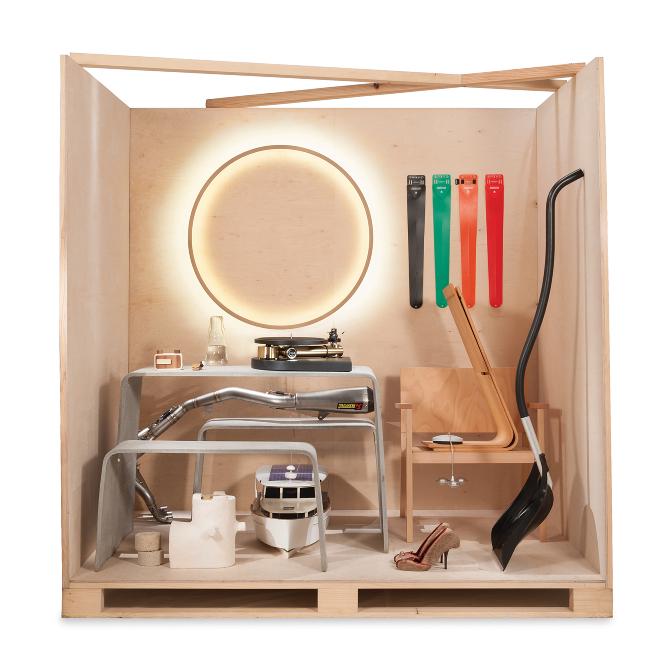

The exhibition includes industrial products of large companies with their own brands, as well as products manufactured in limited editions by the designers themselves. The exhibition features products by Igor Akrapovič, Asobi, Bevk Perović arhitekti, Lara Bohinc, Ivo Boscarol, Gigodesign, Gorenje Design Studio, Jernej and Japec Jakopin, Leonora Jakovljević, Kabinet 01, Toni Kancilja, Rok Kuhar and Katjuša Kranjc, Franc Kuzma, Studio Miklavc, Rok Oblak, Oloop, Tanja Pak, Marko Pavlinec, Janez Suhadolc, Arne Vehovar, Nika Zupanc, Peter Florjančič, Niko Kralj, Saša J. Mächtig, Davorin Savnik and Marko Turk.
One of the companies featured at the exhibition in Moscow is Studio Miklavc. Its founder, Jure Miklavc, Slovenian industrial designer, spoke to us about participation at the exhibition:
Why did you take part in the exhibition?
The purpose was to present successful projects from the last few years which were the result of good cooperation between designers and companies. This success was not coincidental; it was the result of concrete professional collaboration, experience and, of course, enthusiasm. Several designers have proved successful, acquiring various internationally renowned professional awards; our products are successful and marketed all around the world. Quite a few products at the exhibition were actually iconic in their fields. Mine were Alpina Racing Elite CS and CL Cross-country Ski Boots; our studio has been involved in their development for almost 15 years and this is our fifth generation. The boots are one of the most successful and recognisable Slovenian products abroad. The programme accounts for one third of the global market share and the boots are used by the best cross-country ski runners in the most important competitions. Recognisability was achieved because of the design.
What are your impressions of the exhibition in Moscow?
Russia is a vast and very interesting market, which is why the presentation in Moscow was an important venue for the Silent Revolutions exhibition. Judging from the response, the interest was great, and I hope that concrete business cooperation come out of it. But we should not expect too much, since the exhibition was the first step towards the more systematic promotion of Slovenian designers abroad, which should expand with time and target different interest groups. Some countries are being promoted through the achievements of their designers, and they use these achievements as one of the main tools for creating a positive identity and the recognisability of their culture abroad. They have been doing this systematically for several decades.
Do you think that Slovenian companies are sufficiently aware of the value of design as an important development element?
Some companies are aware of the significance of design and incorporate it into their development processes. These are usually companies which are striving to break through internationally, and are well aware of the importance of incorporating all-round quality in their services and the strategic development of a brand. Naturally, this requires a lot of knowledge and experience for the right kind of management, which is why such companies are still in a relative minority. Nowadays, a well-designed product is only a ticket of admission for a breakthrough in a competitive market.
What is your attitude to Philippe Starck and his work?
With his numerous successful projects, Phillipe Starck is certainly the first global star of design. He was one of the first to systematically become a designer-brand. Many are trying to emulate that today. It is interesting that in recent years he has started addressing design with more social responsibility than in the past. In Moscow, Starck provided an interesting description of Slovenian designers. He said that we were ‘timeless’, we think long-term and we avoid ephemeral trends. Our products are intelligent, simple and fair.
Tanja Glogovčan, SINFO

































































